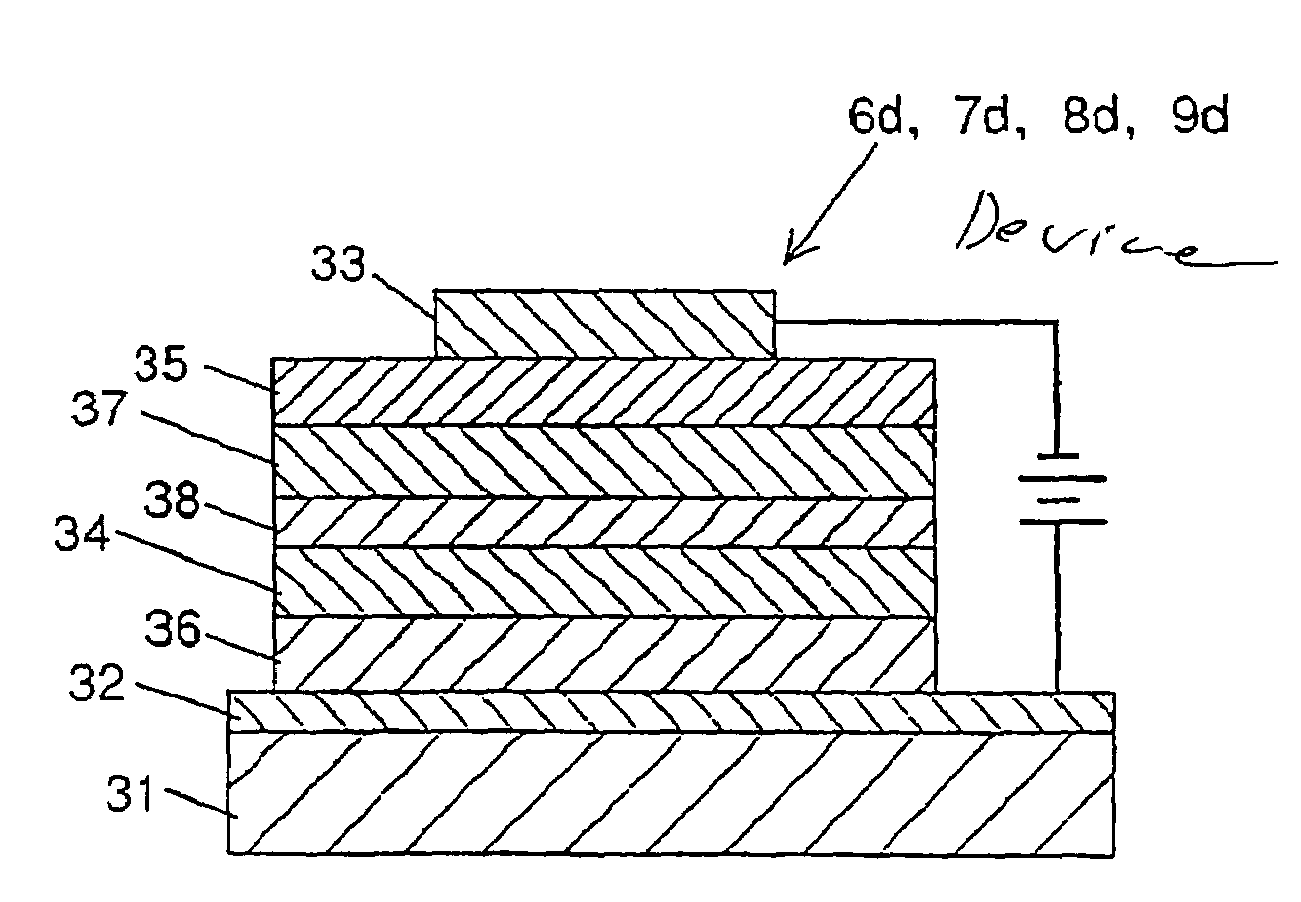Organic electroluminescence element and an exposure unit and image-forming apparatus both using the element
an organic electroluminescence element and exposure unit technology, applied in the direction of instruments, discharge tube luminescnet screens, electrographic processes, etc., can solve the problems of difficult to achieve full color emission, low efficiency of taking out actual emitted light into the air, and strong influence on emission light, so as to improve the emission light quantity of organic electroluminescence elements and alleviate damage during film formation
- Summary
- Abstract
- Description
- Claims
- Application Information
AI Technical Summary
Benefits of technology
Problems solved by technology
Method used
Image
Examples
first embodiment
(First Embodiment)
[0066]FIG. 1 is a schematic view showing the configuration of a color image-forming apparatus in the first embodiment of practicing the invention. FIG. 2 is an explanatory drawing showing in detail the exposure part of the color image-forming apparatus depicted in FIG. 1. FIG. 3 is an explanatory drawing showing in detail the photoreception part of the color image-forming apparatus depicted in FIG. 1. FIG. 4 is an explanatory drawing showing in detail the development part of the color image-forming apparatus depicted in FIG. 1. FIG. 5 is a cross-sectional view showing the essential part of an organic electroluminescence element used as the light source of the exposure part depicted in FIG. 2. And, FIG. 6 is a cross-sectional view showing the essential part of another modified example of the organic electroluminescence element used as the light source of the exposure part depicted in FIG. 2.
[0067]In FIG. 1, the color image-forming apparatus 1 is provided with develo...
second embodiment
(Second Embodiment)
[0116]FIG. 7 is a cross-sectional view showing the essential part of an organic electroluminescence element used as the light source of the exposure part for the color image-forming apparatus in the second embodiment for practicing the invention. For confirmation, in the present embodiment, the configuration and the details of the color image-forming apparatus are the same as depicted in FIGS. 1 to 4 used in the first embodiment.
[0117]The depicted organic electroluminescence element as the exposure light source has a structure comprising, on a substrate 31, an anode 32, a first hole transport layer 36, a first light emission layer 34, a charge generation layer 38, a second hole transport layer 37, a second light emission layer 35, another charge generation layer 38, a third hole transport layer 36, a third light emission layer 34, still another charge generation layer 38, a fourth hole transport layer 37, a fourth light emission layer 35 and a cathode 33, all stac...
third embodiment
(Third Embodiment)
[0125]FIG. 22 is a cross-sectional view showing the essential part of an organic electroluminescence element used as the light source of the exposure part for the color image-forming apparatus in the third embodiment for practicing the invention. For confirmation, in the present embodiment, the configuration and the details of the color image-forming apparatus are the same as depicted in FIGS. 1 to 4 used in the first embodiment.
[0126]The depicted organic electroluminescence element as the exposure light source has a structure comprising, provided on a substrate 31, an anode 32, a first hole transport layer 36, a first light emission layer 34, a cathode 33, an insulating layer 39, an anode 32, a second hole transport layer 37, a second light emission layer 35 and another cathode 33, all stacked in turn. In other words, in the structure, the anodes 32 and the cathodes 33 are arranged alternately each with the intervening light emission layer 34 (35) and hole transpo...
PUM
 Login to View More
Login to View More Abstract
Description
Claims
Application Information
 Login to View More
Login to View More - R&D
- Intellectual Property
- Life Sciences
- Materials
- Tech Scout
- Unparalleled Data Quality
- Higher Quality Content
- 60% Fewer Hallucinations
Browse by: Latest US Patents, China's latest patents, Technical Efficacy Thesaurus, Application Domain, Technology Topic, Popular Technical Reports.
© 2025 PatSnap. All rights reserved.Legal|Privacy policy|Modern Slavery Act Transparency Statement|Sitemap|About US| Contact US: help@patsnap.com



